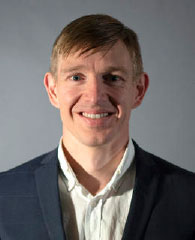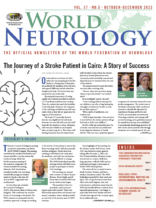By Steven Peters, MD

Steven Peters
The Canadian Neurological Sciences Federation (CNSF) has been a unifying organization in Canada since 2006, though its roots stretch back to the 1940s. Neurosurgeons, adult and pediatric neurologists, neuroradiologists, and electrophysiologists all have a home under a single federation. In this unique arrangement, each member society also maintains its own executive and specific initiatives but works collaboratively with all CNSF societies. The cooperation between societies enriches the annual national congress, where the entire spectrum of physicians in the neurosciences are able to join together for networking and to address issues specific to Canadian health care.
Canada has long supported innovations in neurologic and neurosurgical care, from the pioneering epilepsy surgeries of Wilder Penfield to the endovascular stroke trials of today. Despite an abundance of expertise and innovation, Canada’s relatively small population, spread out over vast distances, has required unique solutions to maintaining a national organization
The CNSF Today
This unique partnership of neurologists, neurosurgeons, clinical neurophysiologists, child neurologists, and neuroradiologists continues to hold a combined annual Congress in June every year, with rotating locations from the Pacific to Atlantic oceans, from the Rocky Mountains to the skyscrapers of Toronto and Montréal. The CNSF has approximately 1,100 members and four staff in the Secretariat Head Office. Both the CNSF and member societies support advocacy initiatives across the country. Additionally, the CNSF publishes the Canadian Journal of Neurological Sciences (CJNS).
History of the Federated Model
The current close relationship between clinical neurosciences specialties has developed over many years. The Canadian Neurological Association was founded in 1948 in Montreal and was attended by Wilder Penfield, Allan Waters, Walter Hyland, Jean Saucier, Francis McNaughton, and Roma Amyot. Thirty-eight members attended the inaugural general meeting.
In 1965, the Canadian Neurological Society, representing both neurologists and neurosurgeons, was dissolved, and two new societies were formed representing two distinct disciplines: the new Canadian Neurological Society for neurologists and the Canadian Neurosurgical Society for neurosurgeons. A liaison committee, with executive officers from the two societies, was formed to administer conjoint activities. This committee was important in planning the first annual joint meeting held in 1965: the first Canadian Congress of Neurological Sciences. In subsequent years, the two societies were joined by the Canadian EEG Society (later named the Canadian Society of Clinical Neurophysiologists) and the Canadian Association of Child Neurology.
In 1990, the Canadian Congress of Neurological Sciences was formally incorporated with a Board of Directors representing each of the four member societies, with a permanent Secretariat Office in Calgary. In 2006, the name was changed to the Canadian Neurological Sciences Federation (CNSF). The Canadian Society of Neuroradiology and Canadian Stroke Consortium have since joined the family.
Eyes to the Future
Canada’s federation of neurologic and neurosurgical physicians and surgeons combines the advantages of a large organization with the focus and specificity of smaller, tailored organizations. Although the organization will undoubtedly continue to evolve and adapt, the CNSF organizational structure can be a successful model for many small and mid-sized countries with growing expertise in the neurosciences. Canada is ecstatic to host both the 2023 World Congress of Neurology in Montréal and the 2023 World Stroke Congress in Toronto. Come join us! •
Steven Ray Peters, MD, is president of the Canadian Neurological Society.
